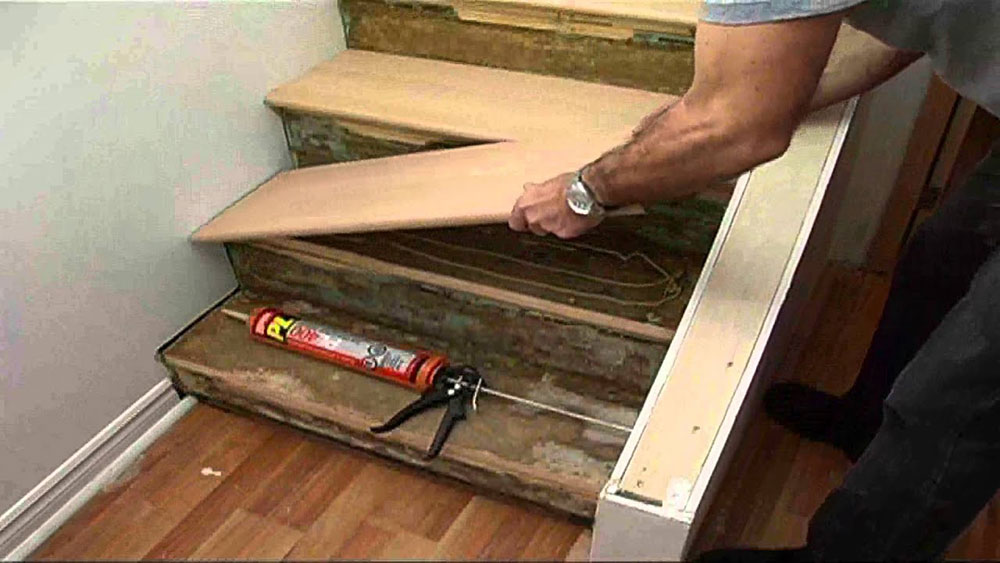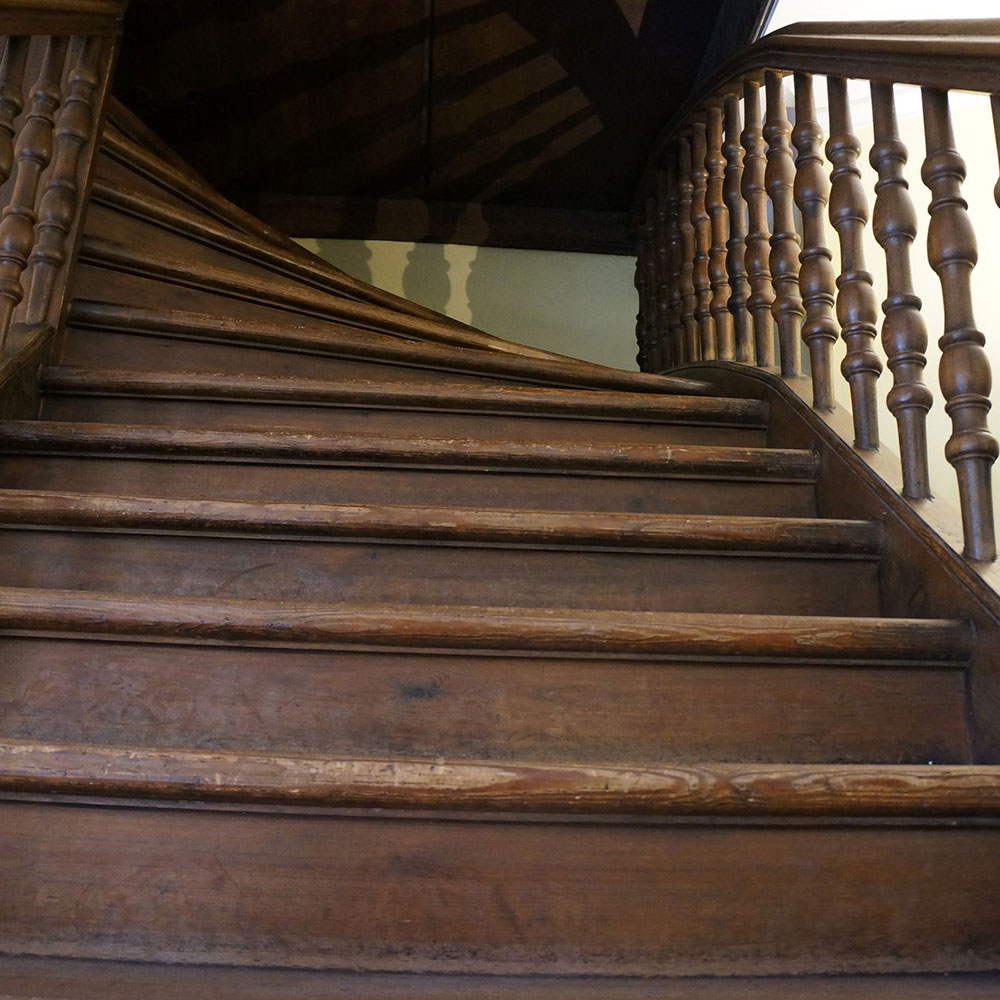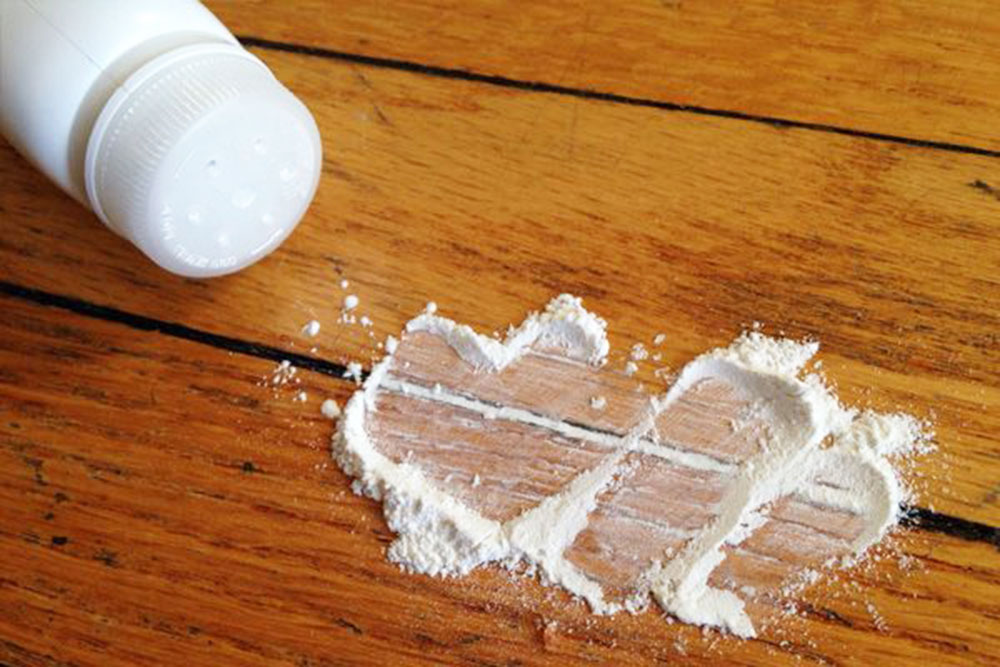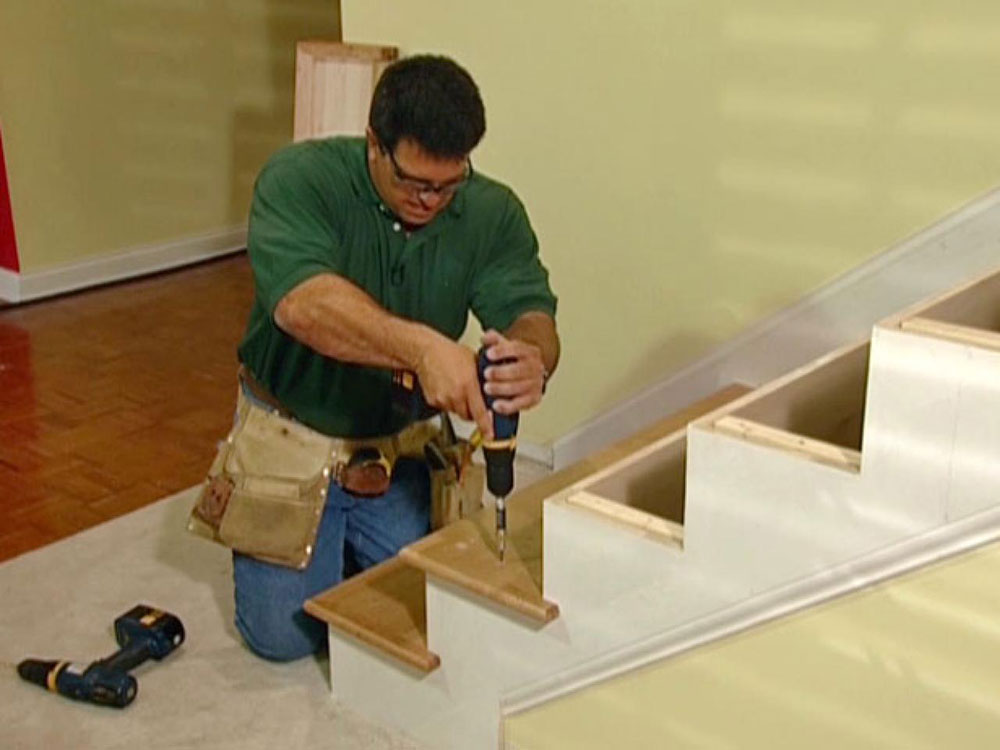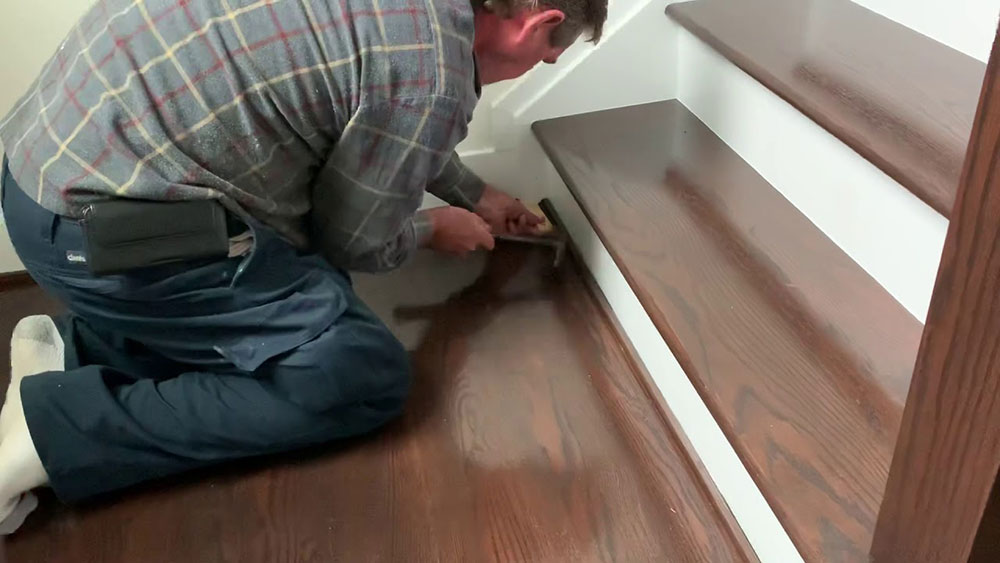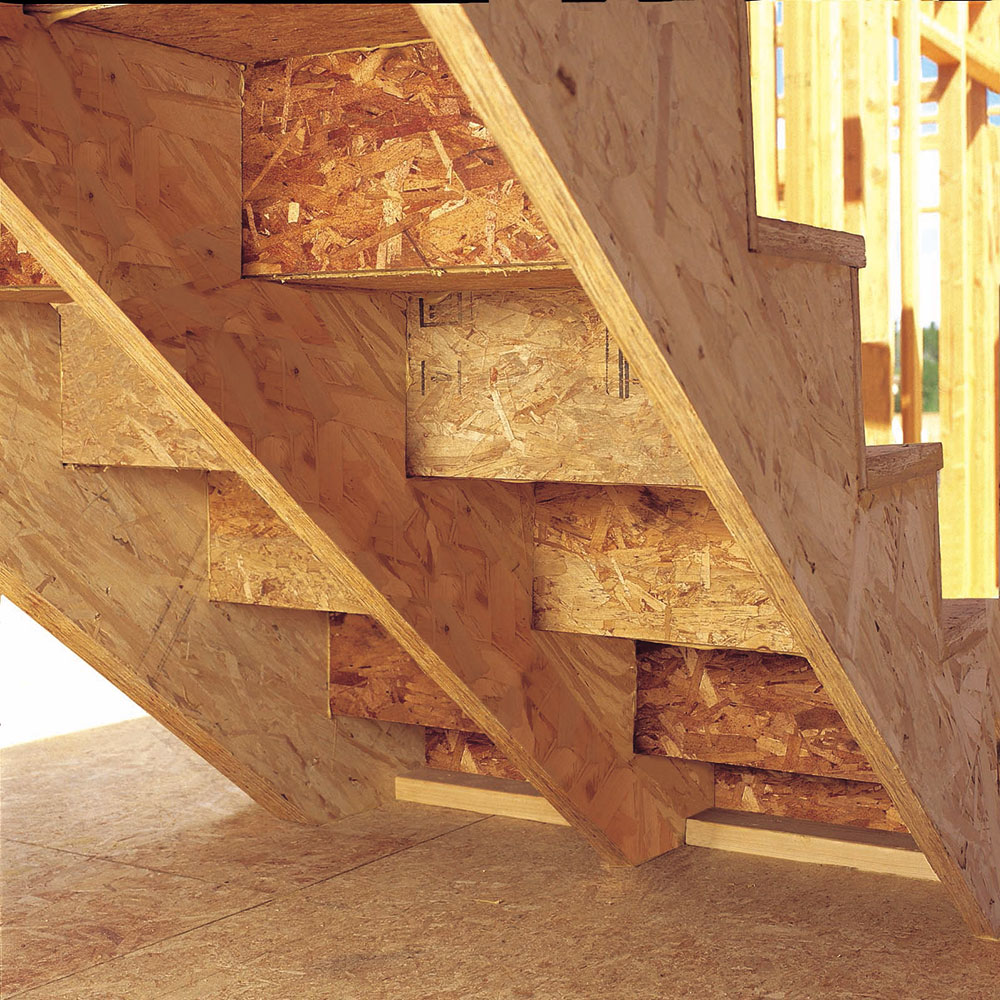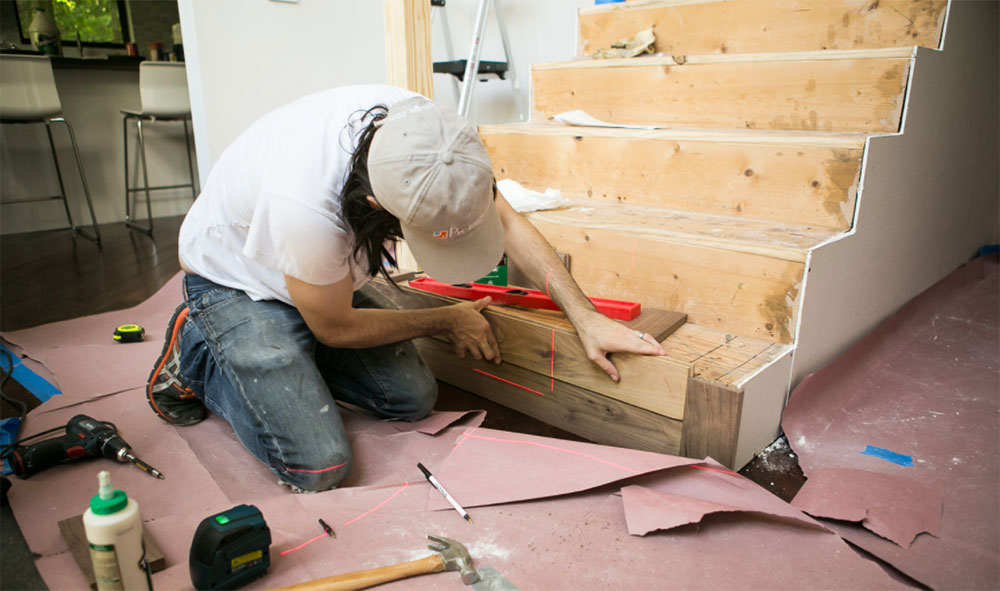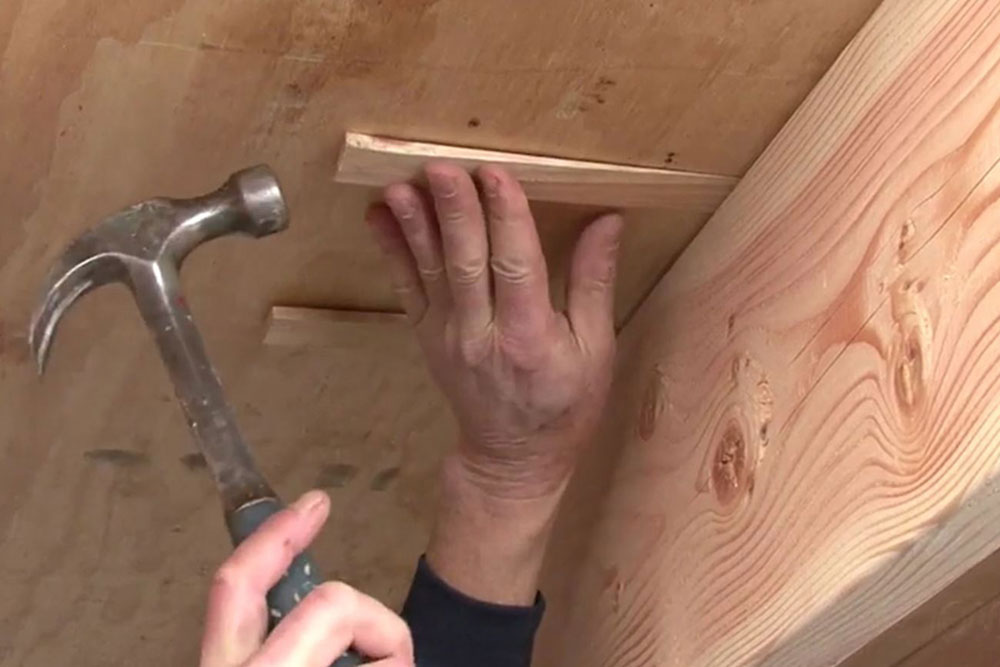Advertisement
This article will teach you how to fix creaky stairs in a few steps. With the obligatory pun intended.
If there is more than one floor in your building, then you’ve got stairs. Stairs are very easy to construct and generally made from wood. This wood can warp with time and see several applications that can cause stairs to collapse.
And you have seen it and heard it in so many terrifying movies, where a staircase crashes in the evening and astonishes the owner of his house. However, creaky stairs are an everyday problem and typically just irritating.
The critical factors of collapsing stairs are the narrowing of the wooden tread and wear-and-tear on the staircase’s wooden parts, which cause one wooden part to reverse. This article will help you how to fix creaky stairs.
How to find the creaks
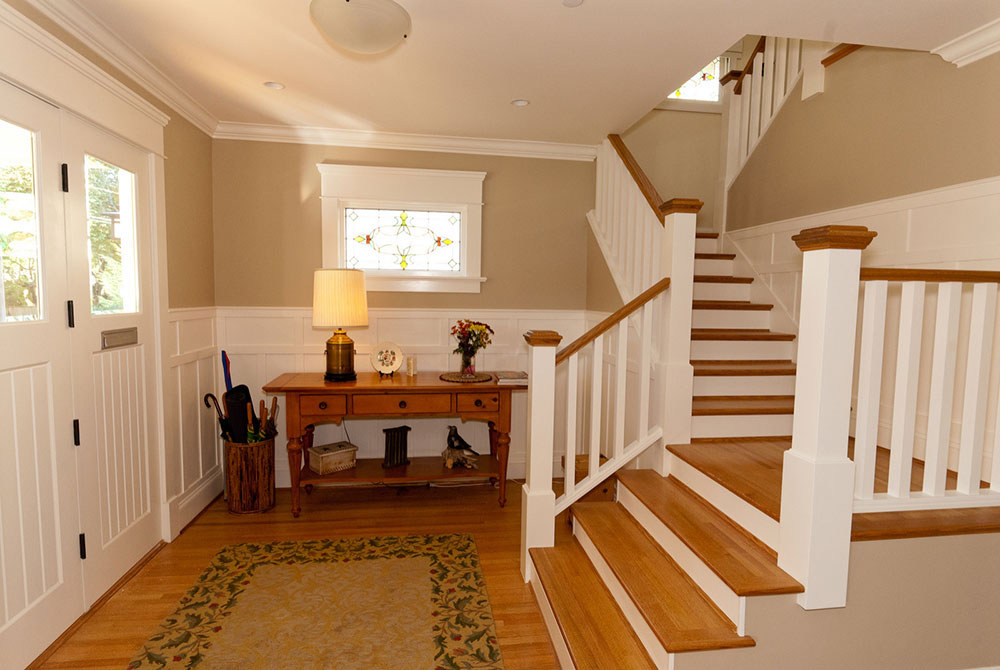
Image source: Marino General Contracting
On their own, most fairly handy folks will handle a creaking staircase.
Finding just where each step is creaking is the first thing you’ll need to do. Slowly walk up the stairs on each step, then equally spread the weight on the step and rock forward, followed by a rocking motion side-by-side.
Mark it with a little piece of masking tape if it produces a creaky sound.
Repeat for each phase before all the problem areas have been found. This helps to explain how to fix creaky stairs.
There are three main components on how to fix creaky stairs:
- Treads are the horizontal surfaces where you put your feet.
- Risers are the vertical surfaces in between the treads.
- Stringers are what frame the staircase on both sides, supporting the treads and risers.
Fix the creaks
If any time you ascend, whether carpeted or wooden, the stairs creak/squeak, you can quiet them by introducing one of these simple but powerful methods.
How to fix creaky stairs by dampening the creak with lubricant
Filling the gap between the tread and the riser with oil is one of the simplest ways to muffle a grating that emerges from the track’s back or sides. Often, if more than one wooden board is made up with each step to your stairs, the grating may be caused by those two boards rubbing against each other. Pour lubricant in between them in this situation. For this process, suitable oils include powdered graphite, powdered soapstone, talcum powder, etc.
- It’s relatively straightforward to add lubricants, and you won’t even have to include experts.
- To work the powdered graphite on the region where the tread reaches the riser, use a piece of cloth or brush.
- Ensure that the lubricant hits the entire area; the creaking would not stop otherwise.
Nail into the risers
The cause of creaking stairs might often be as fundamental as loose nails. But it may not be appropriate to hammer the nails, so you may have to hit a new tack. The squeak problems from the back or the side of the tread much of the time, whether you want a more lasting alternative than a lubricant, securely nail the impression onto its stringer. Two nails (or more if required) are pounded into the center of the tread’s edge in this process, where they reach the riser.
- Be sure a large enough gap divides the drilled holes for nails not to overlap.
- Hammer the nails down until the tread’s surface is marginally lower than their shoulders.
- Take caution not to crack the wood or pierce the pins on the side of the riser.
Screw down loose threads
The tread material will shrink or rust out due to constant use, allowing the tread and riser to rib together, making creaky noise, even though the stair is squeaking at the front. The easiest way is to reinforce the fitting with a few screws between the tread and the riser. Three screws are usually more than adequate per tread.
Another alternate way on how to fix creaky stairs requires pre-drill holes around the tread level with the riser before inserting the screws. Once the screws are in line, make sure they are countersunk below the tread surface. To cover the screws and fill in the minor indentations, you can use a bit of adequately colored wood filler.
Use a moulding or quadrant
A loose tread and riser might often be the source of the creaky sound. So repairing them is the right thing to do. Molding or quadrant use may be a more desirable alternative than actually nailing or screwing together the treads and risers.
Where an open riser or tread is found, a moulding or quadrant may also be glued on. In this process, depending on the riser’s height, the long piece of wood may be glued either at the top of the rise or the bottom, or even both.
While this approach is used as a more aesthetically appealing solution, a little more detailed work is needed. For decorative considerations, it is a smart choice to apply these moldings to all the treads if the staircase is uncovered (no carpets).
Attach glue blocks
The creaky noise can often come from below the stairs. Placing glue blocks under them is a fast way to repair this. To secure the joints between the riser and the tread, glue blocks are used. Small wood blocks are triangular and conveniently created by sawing half a square block around the diagonal. At right angles towards each other, four small pilot holes are drilled into the stone.
On the two shorter sides of each glue block, add wood glue, and then firmly press the blocks into the correct angle formed by the riser and the tread meet. For each creaky point, you would generally need three glue blocks, one is in the middle of the step, and the other two are at the opposite edges.
Replace worn or missing wedges
It most definitely requires a safe wedge for the climbs and treads if the staircase is inserted into a housing string framework. When it was first built, these wedges may have been found in the stairs. They are used to butt the risers and tread up against the housed string mortises so that no holes between the strings and the treads and risers are apparent.
You will need to repair them if the wedges are broken. It’s pretty easy to replace new wedges. Just put an adhesive on the side of the wedge that you plan to join on the tread. Cover the new replacement wedges with glue and softly push the fresh wedges into place using a mallet. To prevent potential complications, it is essential to know how to fix creaky stairs.
Insert small slip wedges
How to fix creaky stairs by inserting slip wedges? The placement of small ‘rutch’ wedges in the joints is another way of locking the joints between the tread and rose.
Using a small chisel to cut off the ends of the protruding wedges until the adhesive has dried up, put some glue on the wedges and fit them into the stair joints. The coil’s insertion method is based on the form of connections in which the ring is connected.
Hopefully, those nervous, creaky moves will be a part of the past soon.
If you enjoyed reading this article about how to fix creaky stairs , you should read these as well:
- Carpet for stairs: How to pick the best one out there
- Stairs Designs That Will Amaze And Inspire You
- Bedroom storage ideas to best optimize your space

